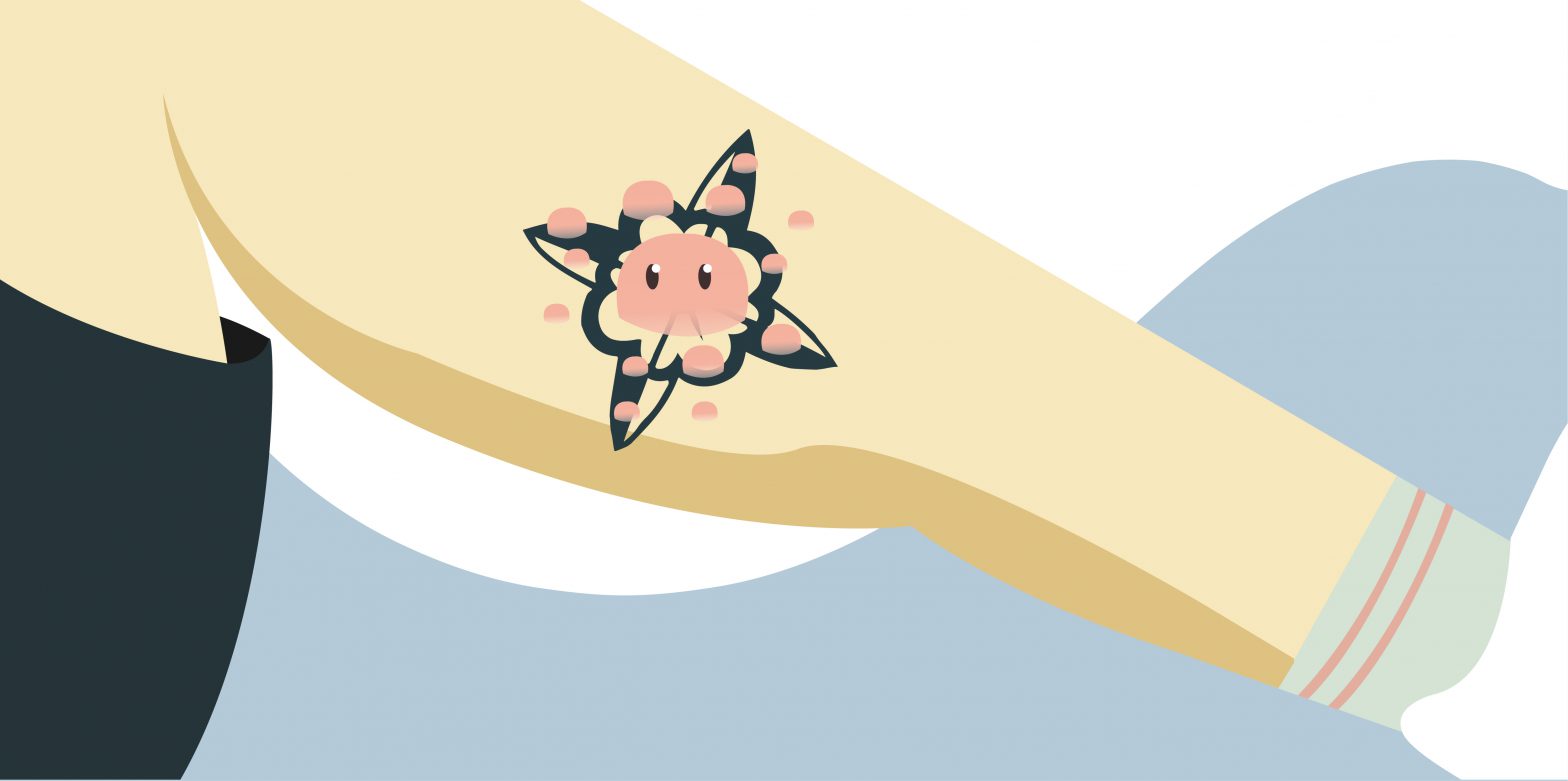When you get new ink for the first time, you’re probably wondering what to expect — and just how gross the healing process can be. Because tattoos are wounds, your skin needs to recover, and as such, itchiness and scabs are part of the colorful romance of the process. Redness, swelling, and possibly even blood are things your skin may endure as it heals within the first couple of weeks — and these things are normal.
However, lesions, scaliness, and lots of pus may be a sign your tattoo isn’t healing properly, or that you have an infection — so if you experience any of these inflictions, let your doctor and the person who did your tattoo know. But what about blisters? They protect your feet from your too-small shoes while you’re breaking them in, for instance. Are they protecting your skin as it heals from your new ink? We tapped New York City dermatologists Dr. Ellen Marmur and Dr. Joshua Zeichner, in addition to Danbury, Connecticut dermatologist Dr. Mona Gohara to weigh in.
Let the healing begin
Marmur says that blisters that form after getting a new tattoo are a sign of inflammation when the healing process begins. “Heat and moisture and an exuberant inflammatory response can create shearing of the skin from within which leads to a blister,” she explains. Her recommendation? She says to protect the skin with
So swell to see you
Zeichner points out that blisters signify significant swelling in the skin, causing skin cells to separate from each other. Like Marmur, he notes that this may be the result of significant inflammation after a tattoo.
Possible allergic reaction
“Or, it may mean that you are developing an allergic reaction,” Zeichner says. If you develop any blisters, he says to make sure to visit your dermatologist for evaluation. The American Academy of Dermatology (AAD) says that “most people develop an allergy to a specific color of ink.” In most cases, red ink is the culprit, but any color can cause an allergic reaction. When this happens, you may notice blisters in only one color of ink.
Temporary tattoo allergic reactions
The AAD notes that a reaction can occur even with a temporary tattoo, at any time between getting the tattoo and up to three weeks later. The allergic reaction is usually caused by a black dye, per the site. Many people have an allergic reaction to black dye that contains a chemical called PPD.
An appointment with too much ointment
Gohara says that blisters post-tattoo application can also be representative of ointment being trapped in a healing tattoo. “The rule of thumb is to let them pop naturally and when they pop, don’t peel off the skin,” she adds. Though this can be tempting, Gohara notes that the top of the blister can be protective. “Just keep it clean, and if you don’t have a sensitivity to topical antibiotic apply some to the area,” she advises.

